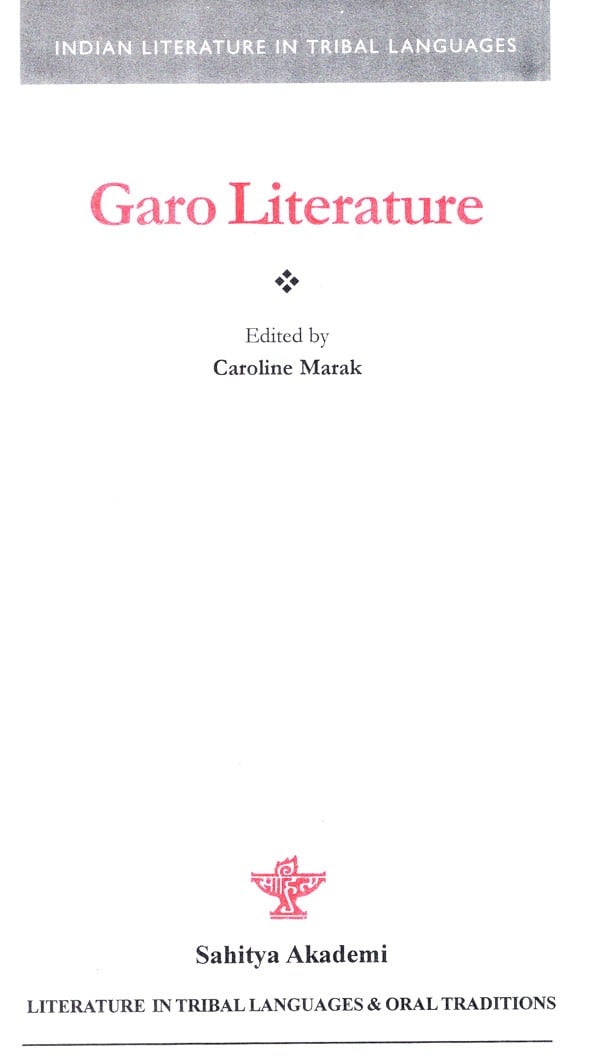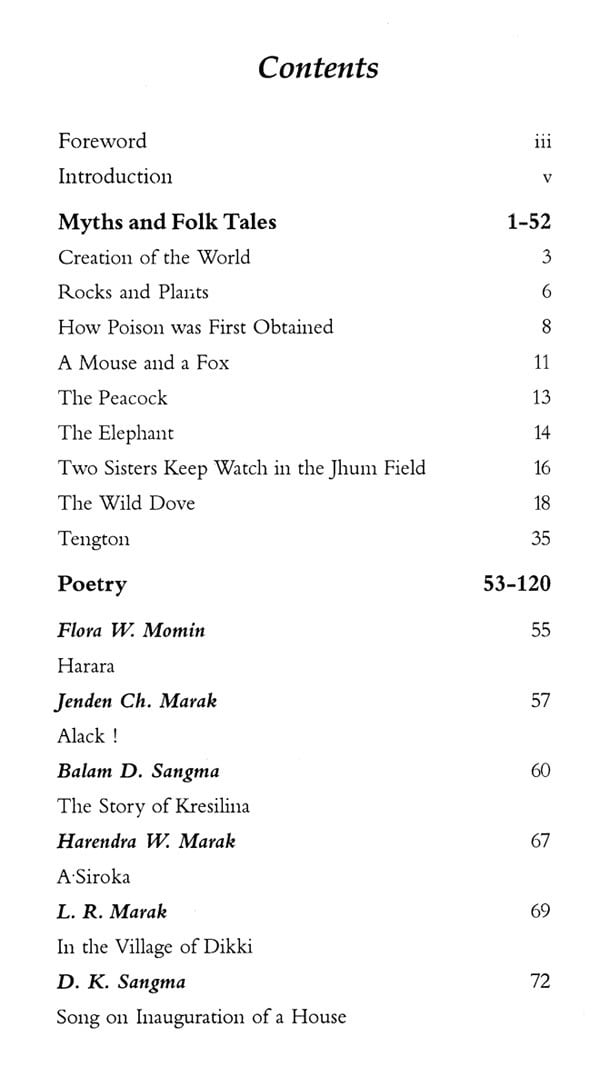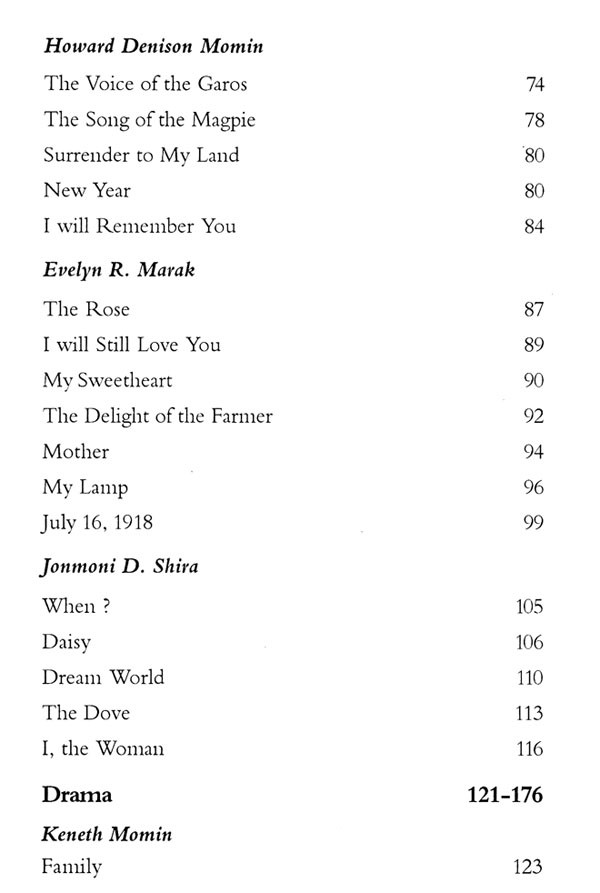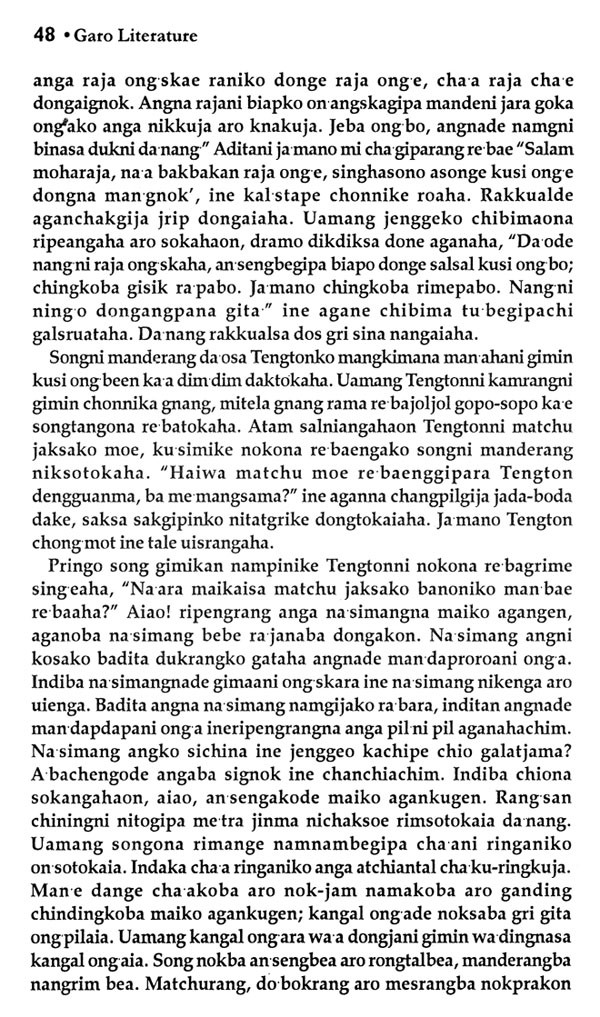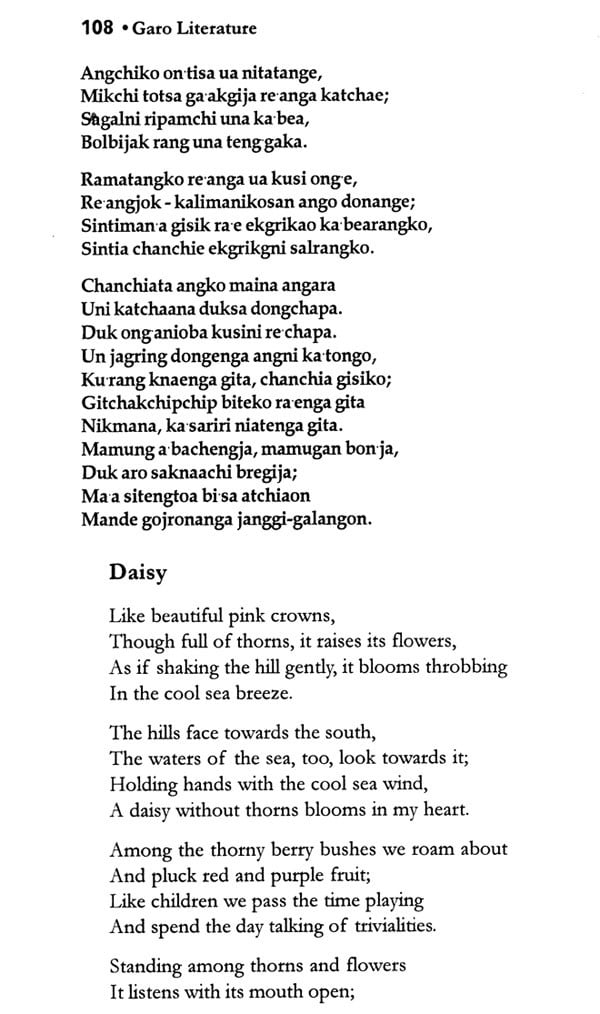
Garo Literature- Indian Literature in Tribal Languages
Book Specification
| Item Code: | AZH077 |
| Author: | Caroline Marak |
| Publisher: | SAHITYA AKADEMI, DELHI |
| Language: | ENGLISH |
| Edition: | 2017 |
| ISBN: | 9788126013722 |
| Pages: | 176 |
| Cover: | PAPERBACK |
| Other Details | 8.50x5.50 inches |
| Weight | 254 gm |
Book Description
The dialects and languages spoken by tribals in India are very large in number. The literary compositions in most of them have survived in oral form though some tribal languages have taken to writing as a means of recording literary compositions. Conventionally, they have been perceived as mere anthropological curiosity, or at best a source for oral history. They have rarely been translated into English or an Indian language as a representation of tribal imagination.
In order to meet the long-felt need for bringing out a systematic series of India's tribal literature, Sahitya Akademi has established a Project of Indian Literature in Tribal Languages and Oral Traditions. This volume is an outcome of it.
Indian literature is marked by its immense variety of styles and forms and the rich interchange of language traditions that form its complex fabric. The distinction between the classical or elite and the oral or folk styles of composition has not been as sharp in India as elsewhere, although such a distinction is bound to arise wherever writing is used as a means of literary communication. Similarly, literary traditions in India have not evolved exclusively along the lines of development of one and the only standardised variety of any of our languages. Rather they have developed through an active interchange between regional varieties and standard forms. As such, no acquaintance with literature in any Indian language will be adequate unless an acquaintance with literary compositions in related dialects is made too. Again, the linguistic complexity of our social situation is such that it is often impossible to decide whether a certain speech style forms the dialect of a given literary language or if it is an entirely independent but related language itself. Most of the speech varieties forming the basis of the culture of tribal communities in India are of this nature. Of course, the exceptions to this general observation too are large in number; and there indeed are many languages spoken by tribals that are clearly independent languages.
This anthology of Garo literature contains songs, folktales, ritual chants, traditional oral poetry, songs about country life, samples of written poetry and a play. The contents have been carefully chosen to give an idea about the oral traditions of the Garos as well as their written literature which emerged a little over a hundred years ago. I must hasten to add that not all the material selected, especially from the traditional oral literature, is necessarily the best and the most representative; because my selection was based on considerations of quality as well as translatability. Many traditional poems and songs are untranslatable due to the lack of equivalent words in English. Besides, some key words have gone out of use, and their meanings are uncertain.
Care has been taken to render the original as accurately as possible in the translated form. The attempt at accuracy has its own problems: phrases in English and Garo rarely see each other eye to eye; the translator can only find approximations, which often tend to appear as weak substitutes or diluted versions. Certain morphemes have no equivalents in English; much of the textual signification is, however, carried by them. Due to these difficulties, the implied meanings in the original may not be carried across in translation, especially in verse and in the play Nokdang. In translation of poems, no attempt has been made to imitate the rhyme-schemes of the original for obvious reasons, though admittedly they are an important part of the composition.
**Contents and Sample Pages**
